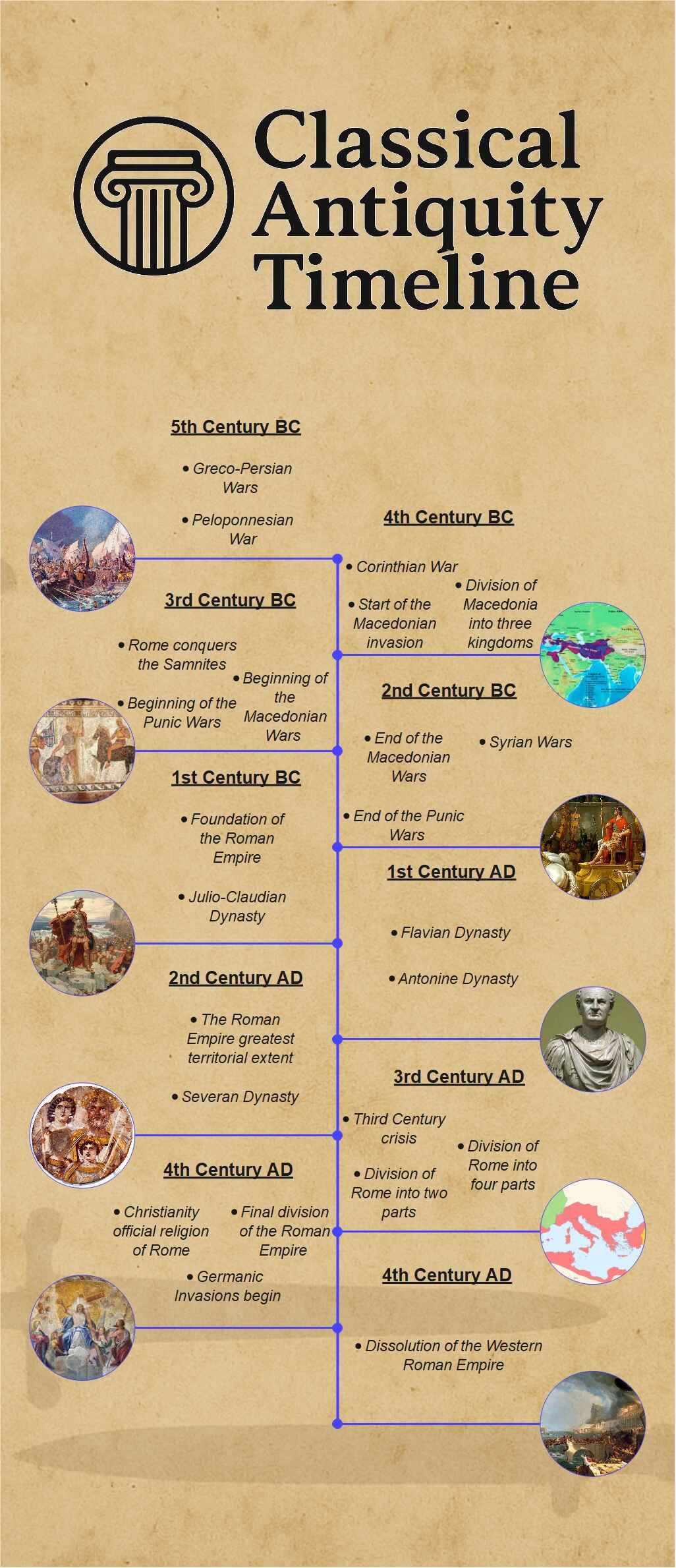Most of us tend to think about history in a story-like way. However, it is anything but stories. History is about very real people making bold choices. Starting revolutions and doing things we’d never dream of.
The Roman Empire is one of those stories. It is full of power struggles and moments that shaped the world we know today. But Rome didn’t rise overnight, and it didn’t fall in a day either. Its journey is stretched over centuries. From a small city-state to one of the most influential empires to date, and finally to its slow decline. This period is called Classical Antiquity.
Let’s walk through it century by century. See how it all starts, grows, and changes.
In this article
Classical Antiquity Timeline
Most of us tend to think about history in a story-like way. However, it is anything but stories. History is about very real people making bold choices. Starting revolutions and doing things we’d never dream of.
The Roman Empire is one of those stories. It is full of power struggles and moments that shaped the world we know today. But Rome didn’t rise overnight, and it didn’t fall in a day either. Its journey is stretched over centuries. From a small city-state to one of the most influential empires to date, and finally to its slow decline. This period is called Classical Antiquity.
Let’s walk through it century by century. See how it all starts, grows, and changes.
5th Century BC
The 5th century BC starts with the Greco-Persian Wars (499-449 BC). Imagine Greece standing up to the mighty Persian Empire. And fighting battles that became legends. The wars helped Athens become a cultural powerhouse. Art, drama, and philosophy flourished there.
But the spotlight didn’t last for long. Soon, Athens and Sparta turned on each other in the Peloponnesian War (431-404 BC). This conflict drained resources, scattered politics, and left Greece weak. On the other side, Sparta won, but again, not without scars.
4th Century BC
Just when Greece thought it could rest, another storm rolled in, the Corinthian War (395–387 BC). But the real game-changer? Macedonia’s rise. Under Philip II, the Macedonian invasion began gaining momentum in the 340s BC. And reached a decisive point with the Battle of Chaeronea in 338 BC, reshaping Greek politics.
Then came Alexander the Great. And who doesn’t know of him? The man didn’t just win battles – he basically rewrote the world’s map. By 323 BC, his death left an empire too large to handle. This led to the Division of Alexander’s empire. Most decisively after the Battle of Ipsus in 301 BC, into three major kingdoms.
3rd Century BC
While Greece dealt with its own problems, Rome was becoming a strong regional power. Between 280-275 BC, it crushed the Samnites, Etruscans, and Gauls. Then came the Punic Wars (starting in 264 BC) against Carthage. They were brutal. The most famous was the Second Punic War (218–201 BC). Think of it as the ancient version of an unstoppable rivalry. Rome eventually crushed Carthage and claimed its lands. And they didn’t stop there. The Macedonian Wars (starting in 214 BC) marked Rome’s deeper step into Greek affairs.
2nd Century BC
Rome wasn’t just expanding; it was becoming a crushing force. The Macedonian Wars ended in 148 BC. Macedonia is now firmly under Roman control as a province. Then, in 146 BC, the Punic Wars ended with Carthage being burned to the ground.
This was the age of endless conquest. But the more Rome grew, the more it cracked. Corruption spread. Political fights in the Senate turned ugly. Meanwhile, in the east, smaller kingdoms like Pergamon and Syria were either swallowed up or turned into Roman provinces. Rome also grabbed Asia Minor after the Syrian Wars (192–188 BC). The empire’s borders were stretching, and so was its ego.
1st Century BC
Now the drama really kicked in. Julius Caesar (you might remember him from Caesar salad) rose to fame during the Gallic Wars (58–50BC). He added huge territories to Rome. But back home, his growing power scared the Senate. Civil war broke out. Caesar won, but his rule was over with his assassination in 44 BC. And no kidding – he was stabbed by people he once called friends.
His death led to another power struggle between Mark Antony, Octavian, and others. Octavian (later Augustus) came out on top in 27 BC, becoming Rome’s first emperor.
This was Rome’s “main character” moment. In 27 BC, the Roman Empire was officially founded, with Augustus at the helm. This kicked off the Julio-Claudian Dynasty (27 BC–69 AD). Where emperors ruled with both brilliance and… let’s just say, questionable decision-making.
1st Century AD
Rome faced civil unrest but bounced back under the Flavian Dynasty (69–96 AD). These emperors built monuments like the Colosseum. They made sure Rome’s power wasn’t just felt but also seen. After them came the Antonine Dynasty (96–180 AD). This era is often remembered as the height of Roman peace and prosperity.
2nd Century AD
This was Rome’s golden age. Under the “Five Good Emperors,” Nerva, Trajan, Hadrian, Antoninus Pius, and Marcus Aurelius. By 117 AD, the empire reached its greatest size and enjoyed relative peace. From Britain to the Middle East, Rome ruled it all. Cities thrived, and Roman law was shaping much of Europe. But behind the stability, new pressures were brewing – including threats along the frontiers. When Marcus Aurelius died in 180 AD, his son Commodus took over, and the decline quietly began.
After that came the Severan Dynasty (193-235 AD). The emperors of this time were Septimius Severus, Caracalla, Geta, Elagabalus, and Alexander Severus. They tried to keep that vast empire stable, but it wasn’t much help.
3rd Century AD
Then came chaos. The Crisis of the Third Century (235–284 AD) saw Rome’s power splinter. Rome faced invasions, plagues, and constant civil wars. Emperors didn’t last long. Some ruled for months before being overthrown.
In 285 AD, Diocletian split the empire into two. And by 293 AD, Rome was divided into four parts under the Tetrarchy. Imagine four emperors at once. It was worse than ordinary office politics. By the late 200s, reforms by Emperor Diocletian pulled things back together to some extent.
4th Century AD
Now, Rome had changed more than just its borders – it had changed its faith. In 380 AD, Christianity went from being persecuted to becoming the empire’s official religion under Theodosius I.
But trouble was on the horizon. The Germanic invasions intensified after 386 AD.
By 395 AD, the empire was permanently divided into East and West under Theodosius I’s sons. Earlier, Constantine had briefly reunited the empire and moved the capital to Byzantium. Renaming it Constantinople. The East grew stronger. But the West… not so much.
5th Century AD
The Western Roman Empire was now hanging by a thread, no joke. Between 406–476 AD, waves of Germanic invasions toppled cities and rulers. Repeated invasions by Visigoths, Vandals, and Huns tore its territories apart.
In 476 AD, the last Western emperor, Romulus Augustulus, was deposed. And that was it – the Western Empire was gone. The Eastern Roman Empire, or Byzantine Empire, would live on for almost another thousand years.
How to Make a Similar Timeline in EdrawMax?
The Classical period is one of the most noteworthy eras of history. This time gave us the iconic Greek and Roman art of architecture. Many architectural marvels were built during this period. Like the Colosseum, the Temple of Athena, and the Parthenon in Athens. And they continue to awe people with their grandeur.
If you want to learn more about this remarkable period, a helpful timeline maker is the best way to do so. And if this is your first time, say hello to EdrawMax. This software will be your new best friend for all your diagramming needs. It is incredibly easy to use. And even if you get stuck somewhere, you can get help from the pop-up tutorials.
Let me show you how to get started:
Step1Download EdrawMax
- Install the application on your PC.
- Sign up to access your Wondershare account.

Step2Start Creating a Timeline
- To start a new project: Basic Diagram > Timeline > Blank Drawing.
- A fresh canvas will appear.
- For time-efficient work, choose from one of EdrawMax’s done-for-you templates.
- From the homepage, go to Templates. Write down your timeline topic in the search bar. Choose from the templates available.
- For this, let’s start from the Blank Drawing option.
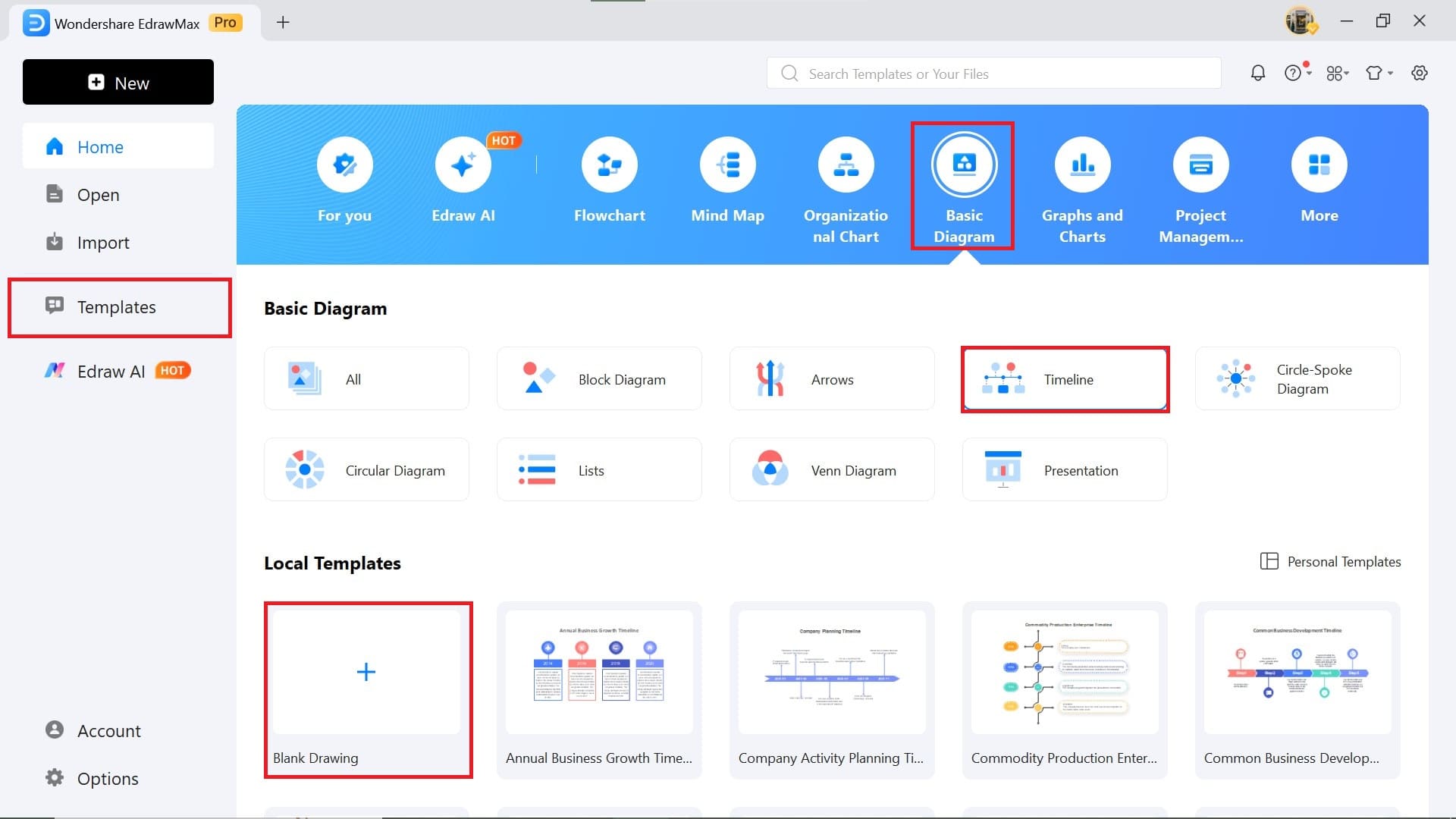
Step3Select a Timeline Layout
- Once on the canvas, navigate to Symbols on the left-hand panel.
- Drag and drop your preferred layout from there.
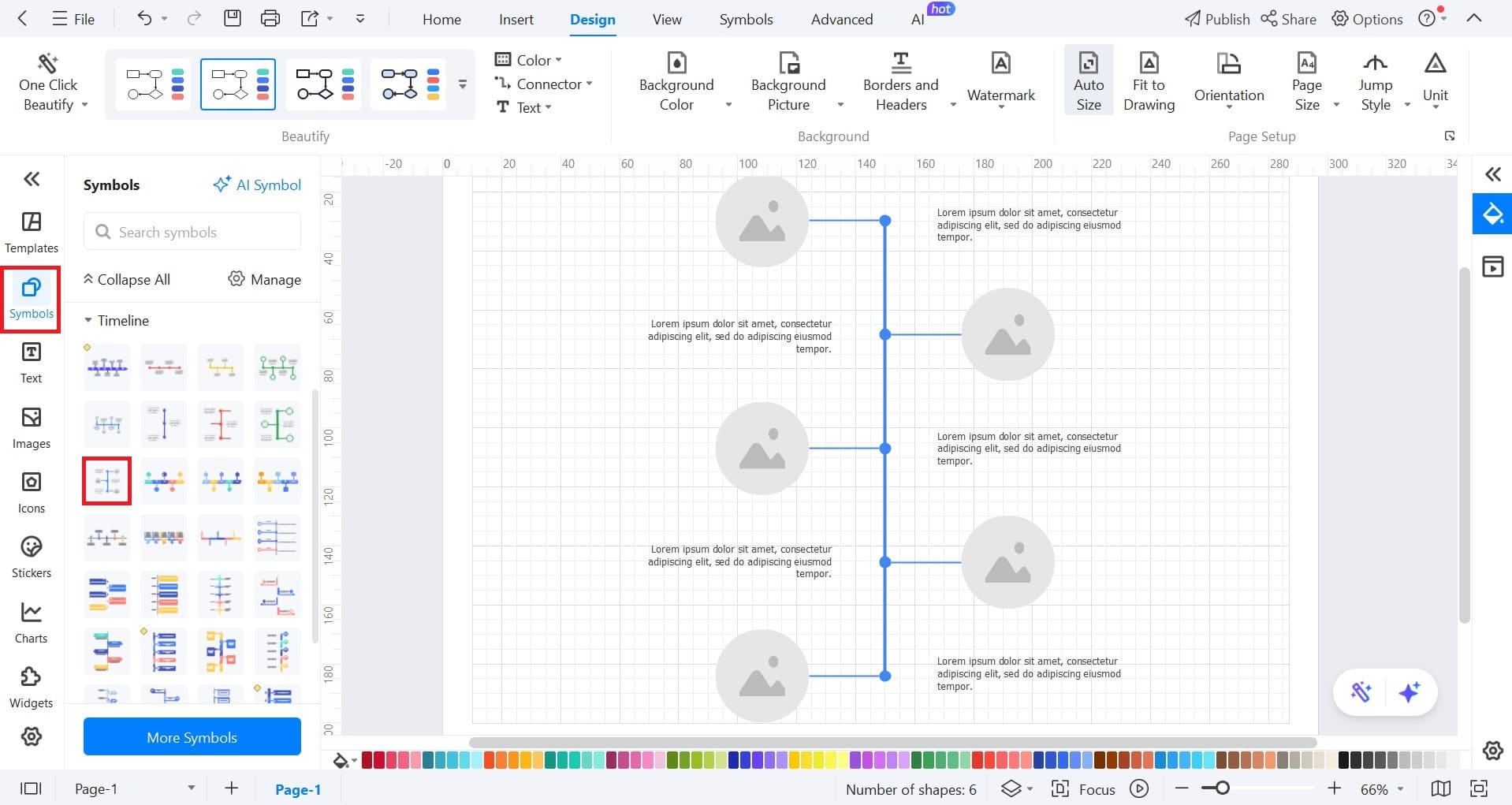
Step4Edit the Timeline
- Click the timeline, and a floating panel will appear.
- Select Number to increase or decrease the lines of the timeline.
- From Picture Size, adjust the frame size for the pictures.
- And Horizontal Interval to adjust the space between the main event and the subtopics.
- Double-click anywhere to add text.
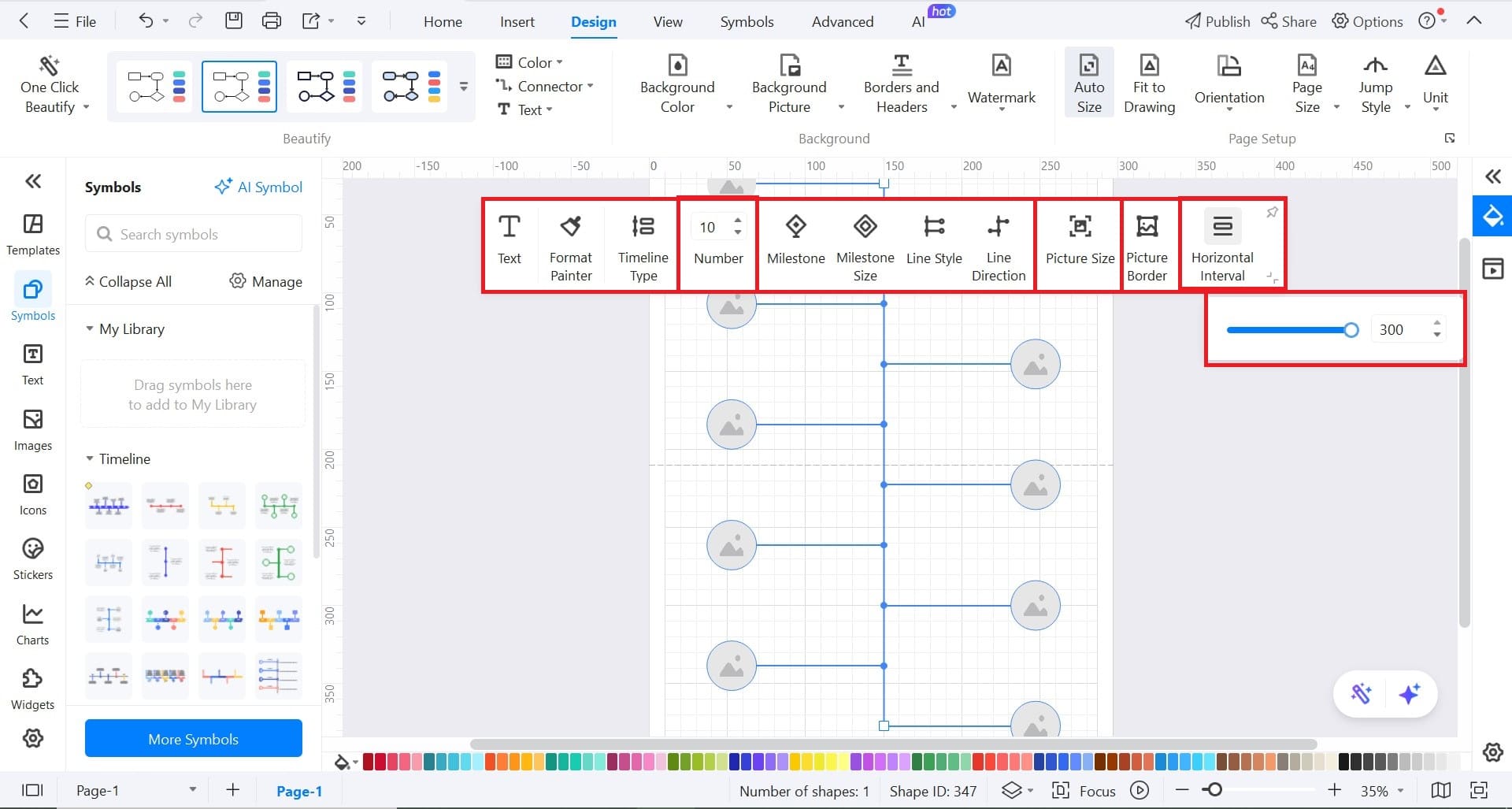
Step5Customize the Timeline
- Select the timeline and then change its color from the quick color bar below.
- To add pictures, select Insert > Picture > Local Pictures.
- Head to Design > Background Picture to customize the background.
- You can also add a local background picture.
- Once it’s on the canvas, select it and click Send to Back.
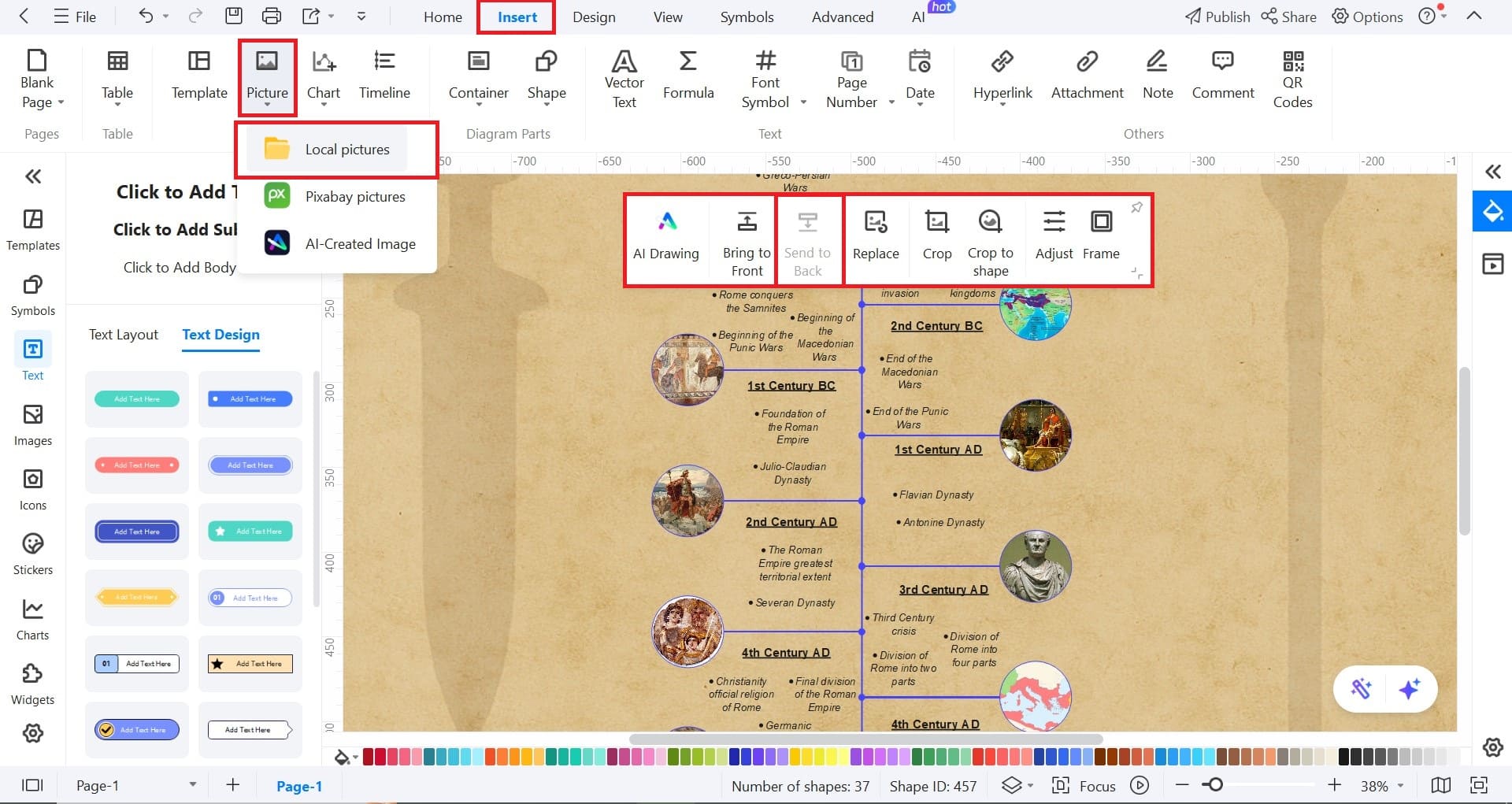
Step6Export the Timeline
- Finally, navigate to the Export icon on the quick access panel.
- Choose from a variety of export formats.
- Hit Export and voila – you’re done.
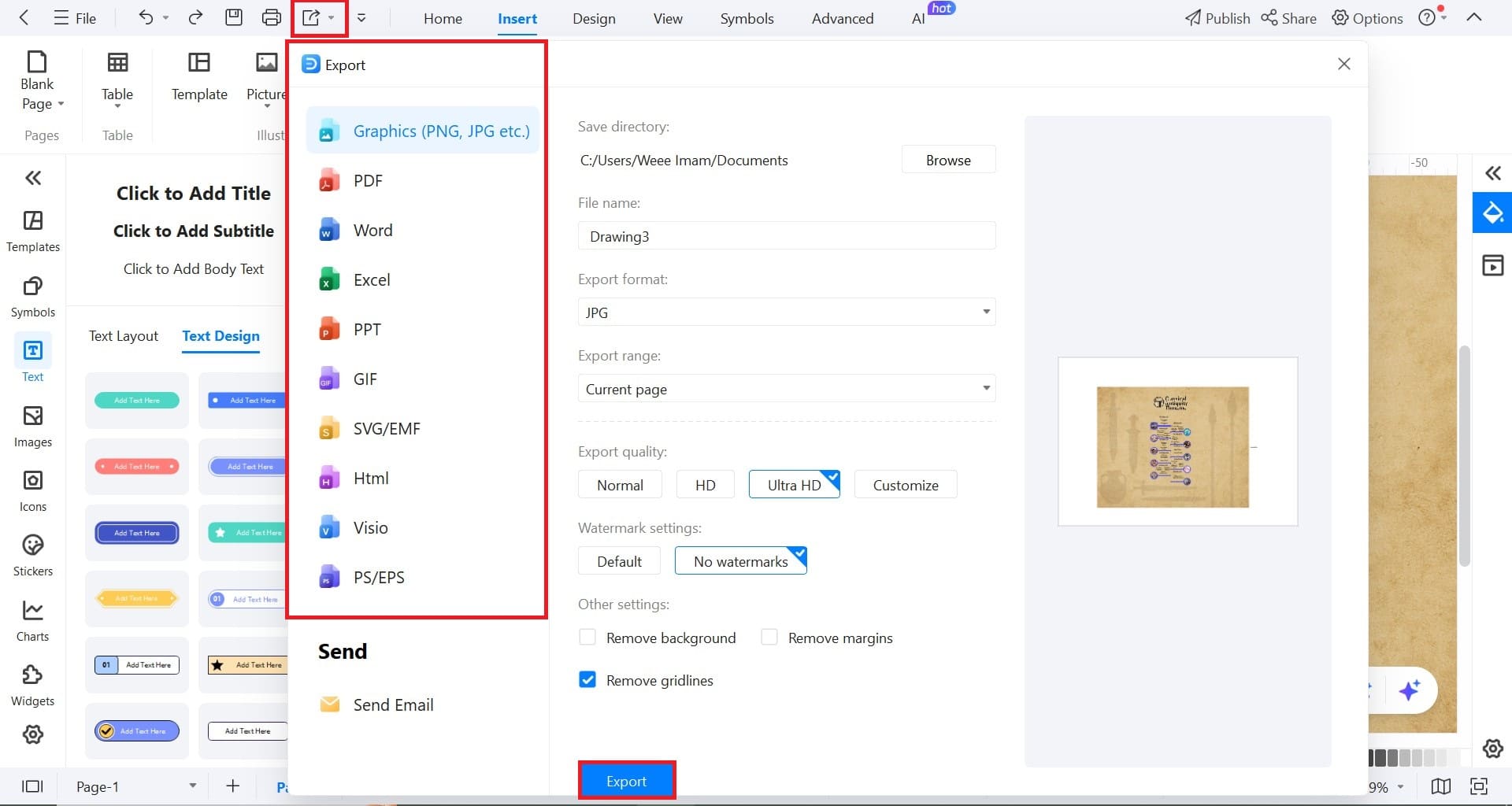
Final Remarks
Classical Antiquity was not just an era. This was a thousand-year period of rewriting history. Rome’s ideas about law, government, engineering, and culture still shape the modern world. From Latin-based languages to straight roads and arches, pieces of Rome are everywhere. Even in places the empire never touched. And yes, it’s wild – and comforting to know those ancient stories are still part of our world.
And hey, if you want to turn this into a timeline, try using EdrawMax. It's a flexible software perfect for anyone just starting. Whether you’re a history enthusiast or a teacher. Check it out by yourself and start creating smooth timelines.




